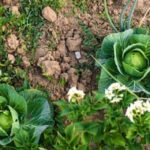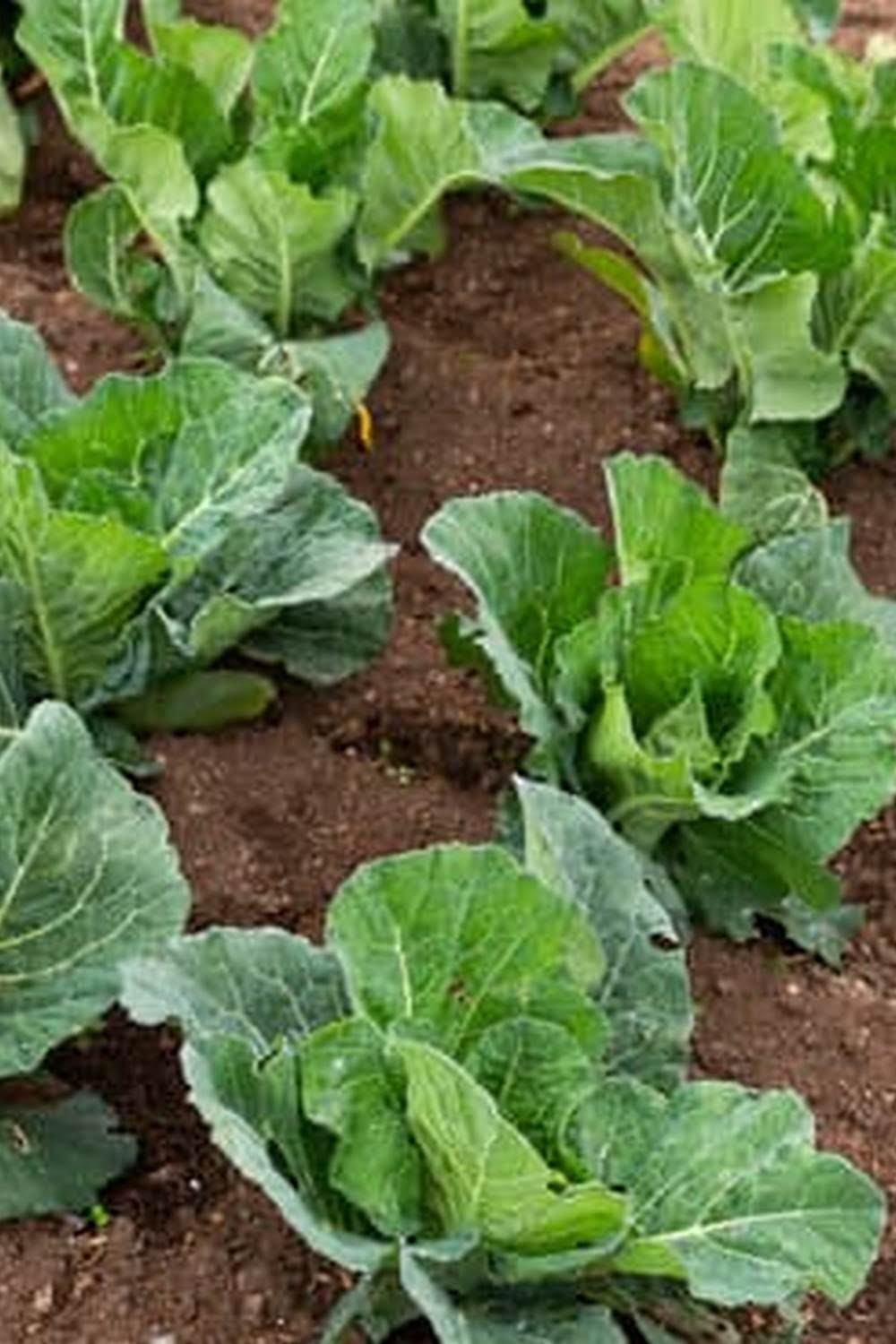Are you interested in cultivating your own vegetables in a sustainable and eco-friendly manner? If so, then natural vegetable gardening tips are just what you need to get started. Natural vegetable gardening focuses on using organic and natural methods to grow delicious and healthy produce right in your backyard. From selecting the right vegetables to harvesting and storing your bounty, this article will provide you with all the information you need to create a thriving natural vegetable garden.
When it comes to natural vegetable gardening, there are numerous benefits that make it an attractive choice for many gardeners. Not only does it allow you to grow fresh, nutritious produce, but it also promotes environmental conservation by reducing the use of synthetic chemicals and preserving natural ecosystems. By following these natural vegetable gardening tips, you can create a vibrant and sustainable garden that enriches both your health and the environment.
Whether you’re a novice or experienced gardener, understanding the principles behind natural vegetable gardening is crucial for success. From preparing the soil to implementing effective pest control measures, each step plays a significant role in promoting healthy plant growth while minimizing negative impacts on the environment.
In the following sections, we will delve into specific techniques for selecting the right vegetables, preparing the soil, composting and mulching, pest control methods, irrigation tips, seasonal care and maintenance, as well as harvesting and storing your natural vegetables.
Selecting the Right Vegetables for Your Garden
When it comes to natural vegetable gardening, selecting the right vegetables for your garden is crucial for a successful and bountiful harvest. Not all vegetables thrive in every climate or soil type, so it’s important to choose plants that are well-suited to your specific growing conditions. Consider the following factors when selecting vegetables for your natural garden.
Climate and Growing Conditions
Before choosing which vegetables to plant in your natural garden, consider the climate and growing conditions in your area. Some vegetables, like tomatoes and peppers, require plenty of sunlight and warm temperatures, while others, such as lettuce and spinach, prefer cooler weather. Take note of the average frost dates in your region and select vegetables that are suitable for your specific growing season.
Soil Type and Quality
The type and quality of your soil will also play a significant role in determining which vegetables will thrive in your garden. Conduct a soil test to determine the pH level and nutrient content of your soil. This will help you select vegetables that are well-suited to the existing conditions or make any necessary amendments to improve the soil quality.
Personal Preference and Consumption
Consider your personal preferences and consumption habits when selecting vegetables for your natural garden. Choose crops that you and your family enjoy eating, as well as those that can be preserved or stored for future use. Additionally, consider the amount of space available in your garden and select a variety of vegetables that can coexist harmoniously in the same area.
By carefully considering these factors, you can ensure that you select the right vegetables for your natural vegetable garden. Taking the time to choose suitable crops will set you up for success and help you achieve a bountiful harvest of fresh, nutritious produce using natural vegetable gardening tips.
Preparing the Soil for Natural Vegetable Gardening
Testing and Amending Soil pH
Before planting your natural vegetable garden, it’s essential to test the soil pH to ensure it is within the optimal range for vegetable growth. Most vegetables prefer a slightly acidic soil with a pH range of 6.0 to 6.8.
You can use a simple at-home soil pH testing kit or send a sample to a local agricultural extension service for analysis. If the pH level is too high or too low, you can amend the soil with natural materials such as lime to raise the pH or elemental sulfur to lower it.
Adding Organic Matter and Nutrients
In order to create a fertile environment for your vegetables, it’s important to add organic matter and nutrients to the soil. Compost, aged manure, and organic fertilizers are excellent options for providing essential nutrients and improving soil structure. Organic matter helps retain moisture, provides beneficial microorganisms, and enhances overall soil health.
Reducing Tillage and Improving Soil Structure
Tillage can disrupt the natural ecosystem within the soil and lead to erosion. By reducing tillage practices in your natural vegetable garden, you can preserve soil structure and prevent nutrient depletion. Utilize no-till gardening methods such as lasagna gardening or sheet mulching to build healthy, nutrient-rich soil over time without disturbing its natural composition.
By properly preparing the soil using these natural techniques, you can create an ideal environment for growing healthy and bountiful vegetables in your natural vegetable garden.
Composting and Mulching Techniques for Sustainable Gardening
Composting and mulching are essential components of natural vegetable gardening. By using these techniques, gardeners can improve soil quality, retain moisture, suppress weeds, and reduce the need for chemical fertilizers.
When it comes to composting, it’s important to create a balance of green and brown materials. Green materials include grass clippings, fruit and vegetable scraps, and coffee grounds, while brown materials consist of dried leaves, straw, and shredded paper. Layering these materials in a compost bin or pile will promote decomposition and result in nutrient-rich compost that can be added to the garden soil.
In addition to composting, mulching is another important practice for sustainable gardening. Mulch can be made from a variety of organic materials such as straw, wood chips, or grass clippings. Not only does mulch help with water retention and weed suppression, but it also breaks down over time to enrich the soil. A layer of mulch around vegetable plants also helps regulate soil temperature and prevent soil erosion.
| Green Materials | Brown Materials |
|---|---|
| Grass clippings | Dried leaves |
| Fruit and vegetable scraps | Straw |
| Coffee grounds | Shredded paper |
Natural Pest Control Methods for Vegetables
When it comes to natural vegetable gardening, dealing with pests can be a major concern for many gardeners. However, there are several effective methods for controlling pests without the use of harmful chemicals. One key tip is to encourage biodiversity in your garden by planting a variety of flowers, herbs, and vegetables. This can attract beneficial insects like ladybugs and lacewings, which feed on harmful pests.
Another natural pest control method is to use physical barriers such as row covers or netting to protect your vegetable plants from insects. Additionally, practicing crop rotation and companion planting can help disrupt pest life cycles and deter them from infesting your garden.
For those dealing with specific pest problems, there are natural remedies that can be used to control them. For example, creating a garlic and chili pepper spray can effectively repel many common garden pests. Similarly, introducing predator insects like nematodes or predatory mites can help keep pest populations in check without the need for chemical pesticides.
Incorporating these natural pest control methods into your vegetable garden not only helps protect your crops from damage but also promotes a healthy and sustainable gardening environment.
| Natural Pest Control Methods | Description |
|---|---|
| Encourage Biodiversity | Plant a variety of flowers, herbs, and vegetables to attract beneficial insects. |
| Physical Barriers | Use row covers or netting to protect vegetable plants from insects. |
| Natural Remedies | Create garlic and chili pepper spray or introduce predator insects to control specific pests. |
Watering and Irrigation Tips for Natural Vegetable Gardening
Proper watering is essential for the success of any vegetable garden, and when it comes to natural vegetable gardening, the emphasis is on using sustainable and eco-friendly methods. One of the most important natural vegetable gardening tips for watering is to water deeply and less frequently.
This encourages plants to develop deep roots, making them more resilient during dry spells. Using a drip irrigation system or soaker hoses can help deliver water directly to the base of plants, reducing evaporation and water waste.
In addition to efficient watering techniques, consider collecting rainwater in barrels to use for irrigation. Rainwater is free from chemicals commonly found in tap water, making it a natural choice for watering your vegetables. Another tip for natural vegetable gardening is to apply mulch around your plants to help retain soil moisture. Organic materials such as straw, grass clippings, or compost can be used as mulch to keep the soil cool and reduce water loss through evaporation.
Lastly, consider incorporating companion planting in your vegetable garden to help conserve water. By planting compatible crops together, they can help shade each other’s roots, reducing moisture loss from the soil. For example, tall tomato plants can provide shade for low-growing lettuce or spinach. These natural vegetable gardening tips can help you maintain a healthy and thriving garden while minimizing water usage and promoting sustainability.
Seasonal Care and Maintenance
After preparing the soil and planting your vegetables, it’s essential to provide proper care and maintenance throughout the growing season. Here are some tips for keeping your natural vegetable garden thriving:
Regular Weeding
Weeds can compete with your vegetables for nutrients and water, so it’s crucial to keep them in check. Regularly inspect your garden for any unwanted growth and pull them out by hand or use a hoe to remove them from the root.
Fertilizing
To ensure that your vegetables have enough nutrients for healthy growth, consider using natural fertilizers such as compost or aged manure. These organic materials not only provide essential nutrients but also improve soil structure and fertility.
Mulching
Mulching is an effective way to conserve moisture, suppress weeds, and regulate soil temperature. Organic mulches like straw, leaves, or grass clippings can also gradually decompose and add nutrients to the soil.
By following these seasonal care and maintenance tips, you can promote the health and productivity of your natural vegetable garden throughout the growing season. Stay tuned for our next section on harvesting and storing your natural vegetables.
Harvesting and Storing Your Natural Vegetables
After putting in the hard work of planting and maintaining your natural vegetable garden, it’s finally time to reap the rewards of a bountiful harvest. Harvesting your vegetables at the right time is crucial for getting the best flavor and nutritional value from your crops. Here are some tips for harvesting and storing your natural vegetables:
- Harvesting: Different vegetables have different signals that indicate they are ready to be harvested. For example, tomatoes should be picked when they are fully ripe and have a deep, rich color, while leafy greens like lettuce can be harvested when they reach a good size for eating. Be sure to research each vegetable you are growing to understand when and how to harvest it properly.
- Storing: Proper storage is essential for preserving the quality and freshness of your harvested vegetables. Some vegetables can be stored at room temperature, while others require refrigeration or even freezing. Consider investing in a root cellar or other suitable storage containers to preserve your harvest for as long as possible.
- Canning and Preserving: If you have an abundant harvest or want to enjoy your vegetables throughout the year, consider learning how to can or preserve them. Canning, pickling, fermentation, and freezing are all methods that can help you extend the life of your vegetables well beyond their typical growing season.
By following these harvesting and storing tips, you can enjoy the fruits of your labor long after your natural vegetable gardening season has come to an end. Whether you’re cooking with fresh produce or enjoying preserved vegetables during the off-season, proper harvesting and storing techniques ensure that you get the most out of your hard work in the garden.
Bonus
In conclusion, natural vegetable gardening offers a sustainable and eco-friendly way to grow your own fresh and healthy produce. By choosing natural methods, you can minimize the use of harmful chemicals, reduce environmental impact, and promote biodiversity in your garden. From selecting the right vegetables to harvesting and storing your produce, there are many tips and techniques to consider for a successful natural vegetable garden.
One important aspect of natural vegetable gardening is extending the growing season. By using various techniques such as cloches, row covers, and cold frames, you can protect your plants from frost and cold temperatures, allowing you to enjoy fresh vegetables for a longer period of time. These methods also enable you to start planting earlier in the spring and continue harvesting into the fall, maximizing your garden’s productivity.
In addition to extending the growing season, it is essential to incorporate composting, mulching, and natural pest control methods into your gardening routine. These practices not only contribute to the health of your garden but also promote a sustainable and environmentally friendly approach. By following these natural vegetable gardening tips, you can create a thriving garden that provides an abundance of fresh produce while respecting the planet.
Frequently Asked Questions
How Do You Grow Vegetables Naturally?
Growing vegetables naturally involves using organic and sustainable practices. This includes avoiding synthetic chemicals, using compost and natural fertilizers, practicing crop rotation, and attracting beneficial insects to help with pest control.
What Are 5 Things You Should Do to Prepare a Good Veggie Garden?
To prepare a good veggie garden, start by choosing the right location with plenty of sunlight and well-drained soil. Next, test the soil to see what amendments are needed for optimal plant growth.
Then, create raised beds or rows and add organic matter like compost. Finally, select the right vegetables for your climate and plan out your garden layout before planting.
How Do I Make My Vegetable Garden Thriving?
To make your vegetable garden thriving, it’s important to provide consistent care and maintenance. This includes regular watering, especially during dry periods, as well as weeding to minimize competition for nutrients.
Additionally, proper spacing between plants can help prevent disease spread and improve air circulation. Lastly, consider using mulch to conserve moisture and suppress weeds while also adding organic matter back into the soil as it breaks down.

If you’re looking to get into vegetable gardening, or are just looking for some tips on how to make your current garden better, then you’ve come to the right place! My name is Ethel and I have been gardening for years. In this blog, I’m going to share with you some of my best tips on how to create a successful vegetable garden.





